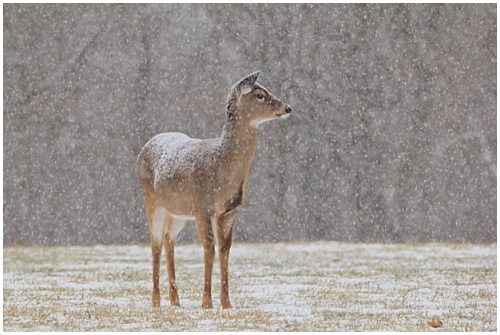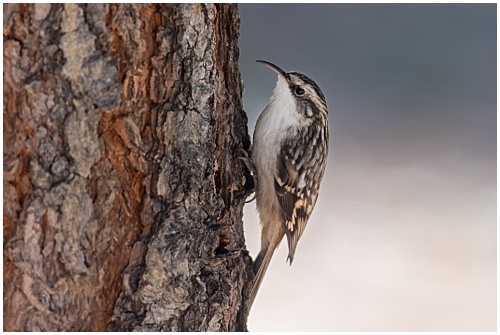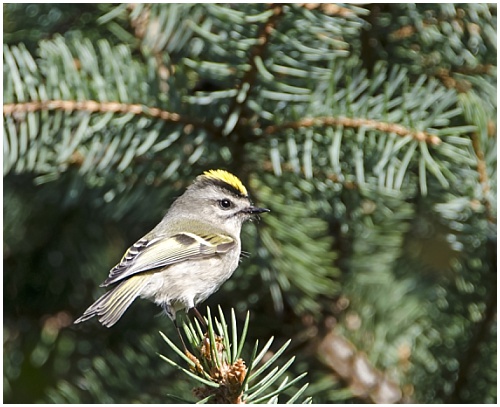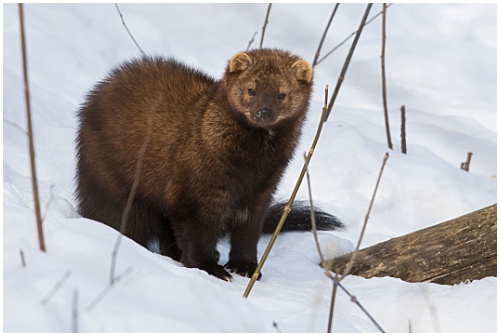January 20, 2021 at 1:15 pm
Here in Maine we have a wonderful tradition of embracing our state’s winter weather with all sorts of outdoor activities. One of the most basic ways to get outdoors is to go for a walk and explore a natural area. Nothing makes a walk through the woods more memorable than getting to see some wild animals. So here are some tips for better wildlife watching.

Move slowly and quietly, and maybe even stop periodically so that the wildlife you are trying to see aren’t spooked. Hunters call this technique “still hunting.” Another benefit of still hunting is that slowing down allows you to be more observant. As you’re exploring look for tracks and signs of wildlife. You can often learn what species of wildlife use the area you’re in without even seeing them. You might see a set of tracks against the surface of the smooth snow, or fresh scrapes or shew marks on a tree. These wildlife signs can standout against the winter landscape. With practice you can see more of these wildlife signs as you learn to see patterns of disturbance in a natural landscape. Before you go, download MDIFW’s Animal Track Pocket Guide (PDF).
The woods in winter can seem almost silent at times, so slowing down and being aware of the noises you make can help. Being quieter as you walk in the woods means not talking as much, but it also means watching out for branches that could snap when you step on them. Watch where you are going and really focus on the activity at hand. You will be amazed at how quickly your sense of hearing perks up and your eyes start to look around more.
If you hear chickadees nearby, stop, look, and listen. Black-capped Chickadees form small, noisy, nomadic flocks for the winter and there’s often other species of birds along with them. Have you ever seen a golden-crowned kinglet or a brown creeper? They’re pretty cool and fairly common small songbirds that like treetops, but usually only seen by those who are intentionally looking (and listening). So, listening for chickadees is a good way to find interesting species in an otherwise quiet woodlot.


If you’re looking to take your wildlife observations to the next level, consider bringing a pair of binoculars or a spotting scope. Part of the fun is being able to identify the wildlife that you see and bringing along a trusted set of optics makes it much easier to see the necessary details from further away. Maybe even identify what animal moved a tree branch or made that sound. Was that a white-breasted nuthatch or a red-breasted nuthatch? If you are lucky enough to catch a quick glimpse of a dark-colored weasel – was it a fisher or a mink? A pair of binoculars, even a basic set, can make a big difference in your experience and help to keep you from wanting to get too close to view the animal.

Be respectful of wildlife. Remember that you are out having a good time but the wildlife that you are seeing live here and need to keep to their routines in order to survive Maine’s harsh winters. You should never intentionally get too close. Practically all wildlife species view humans as a threat – either a predator or a competitor and they don’t want you too close. Plus, it’s much more enjoyable to watch the natural behaviors of the animals we see than it is to see their threat responses (which is often just running or flying away).
Signs to look for to make sure you are not too close: So, how do you know if you’re too close? Look for a change in their behavior. Are they staring right at you? Are they fidgeting nervously, trying to hide, crouching, perked up, or alert? These are all signs that you’ve encroached into their comfort zone. Try staying where you are and letting them adjust to you, but if they still seem alarmed, it is best to back away or continue exploring somewhere else.
Always remember to be safe. Make sure you prepare by dressing for the weather and conditions, bringing water, snacks, and a basic survival kit. Also make sure to tell someone where you are going and when you plan to return. Also always be aware of your surroundings. Wildlife viewing can be a lot of fun and is a great way to add to your outdoor experiences. It can be done anywhere too, backyards, city parks, land trusts, wildlife management areas; anywhere you are allowed to go explore.
Be safe, keep wildlife safe, and have fun!
Additional Resources and Activities to help you increase your wildlife viewing skills:
- Try the Sit Spot, Sound Mapping, Nature Notebook, Scavenger Hunt, or Phenology activities.
- Learn to Identify wildlife tracks with these helpful guides, you can even download the track card to your phone (but you will still need a ruler). Check out the Downloadable Resources.
- Watch this video about Wildlife Signs
- Learn to be safe when exploring the Maine landscape with the You Alone in the Maine Woods booklet.
- Learn more about Maine’s wildlife